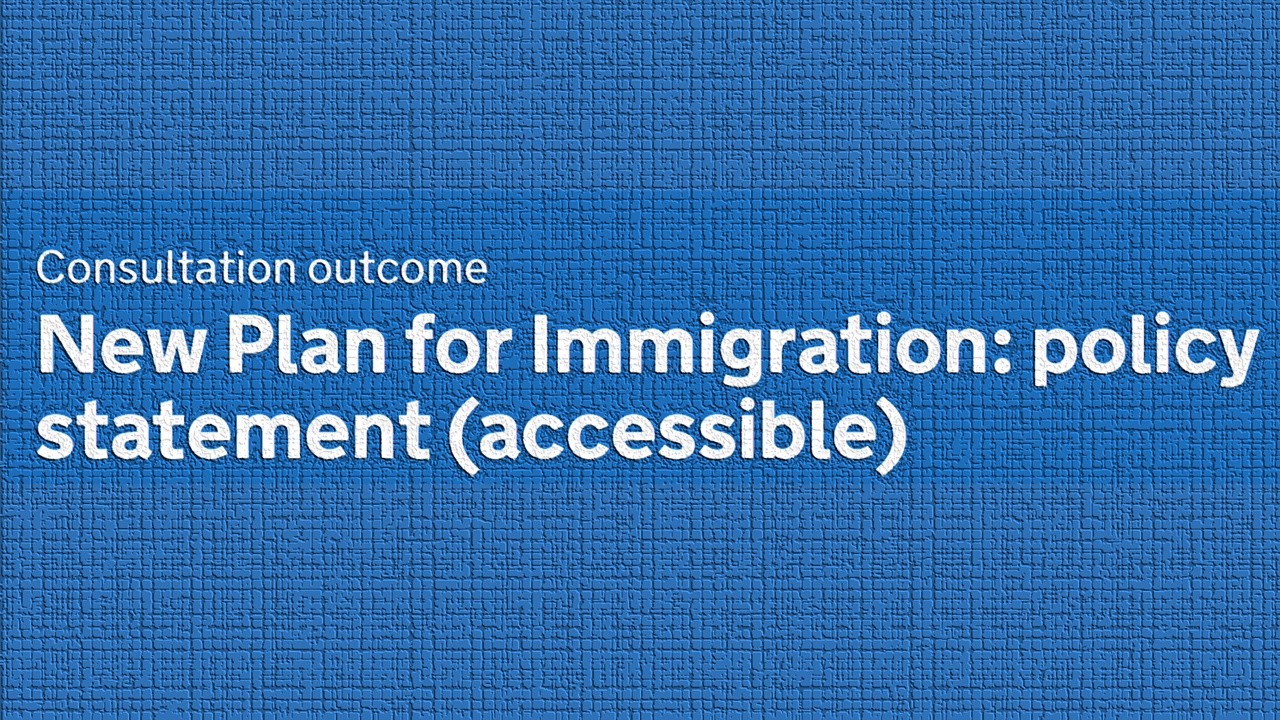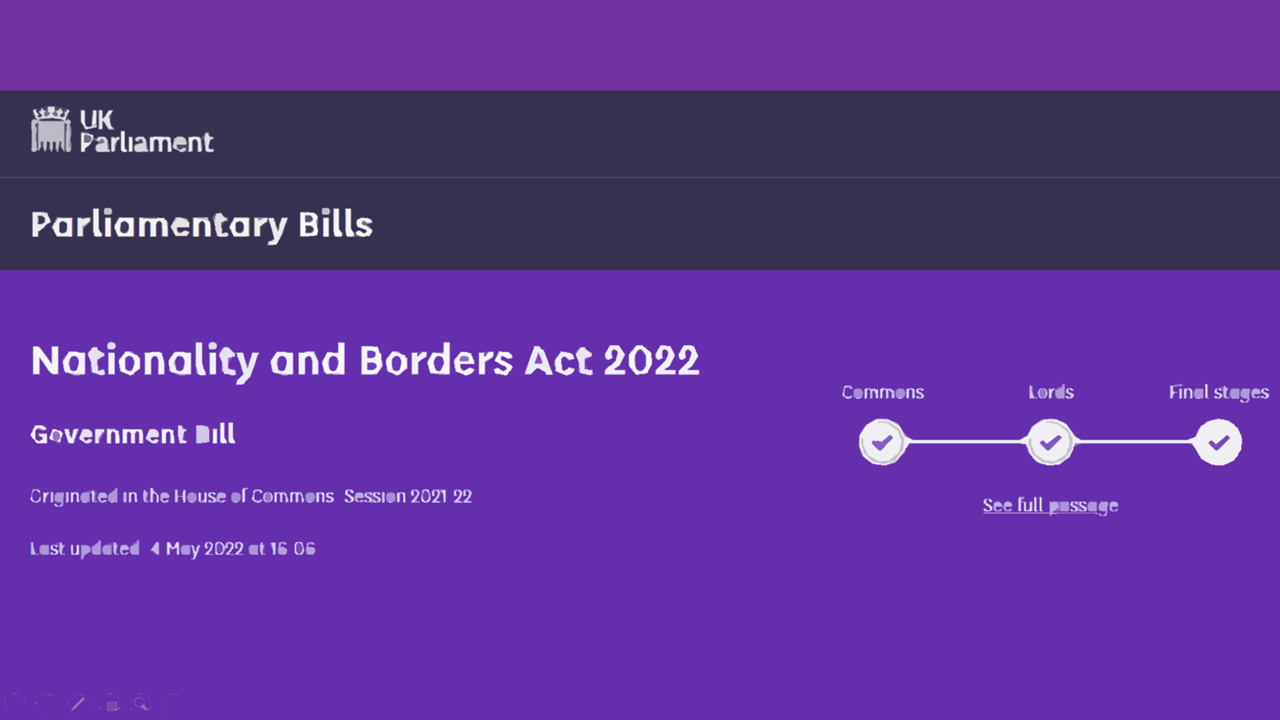A Two-Tier System for Asylum Seekers

In their ‘New Plan for Immigration’ Policy statement, the UK government stated:
‘Our asylum system is too easily exploited by people smugglers and does little to disincentives individuals from attempting to enter the UK illegally.’
‘The rapid intake of asylum claims into the outdated system has outstripped any ability to make asylum decisions quickly, for the courts to process appeals quickly or for the Government to enforce the removal of those with no right to remain in the UK.’
There are currently over 109,000 asylum cases in the system. 52,000 cases were awaiting an initial decision at the end of 2020. Also, around 5,200 have an asylum appeal outstanding, and approximately 41,600 cases are subject to removal action.
Three Objectives
The UK Government introduced the Nationality and Borders Act 2022 (the Act) with three main objectives in mind:
- To make the system fairer and more effective in protecting and supporting those in genuine need of asylum.
- To deter illegal entry into the UK, breaking the business model of criminal trafficking networks and saving lives.
- To remove from the UK those with no right to be here.
You can find out more about the structure of the Act, and how it was created and why it is different from other acts of law HERE.
Two Groups of Refugees
The Act created a two-tier system. From 28 June 2022, the decision-makers will treat all asylum seekers differently, based on their actions.
Group 1 refugees are those who entered the UK via lawful means.
Group 2 are those who enter the UK via irregular routes. For example, when someone entered the UK in a lorry without valid entry clearance or leave to enter (visa).
Group 1
According to section 12 of the Act:
‘a refugee is a Group 1 refugee if they have come to the United Kingdom directly from a country or territory where their life or freedom was threatened, and
they have presented themselves without delay to the authorities.’
They further clarified:
‘Where a refugee has entered or is present in the United Kingdom unlawfully, the additional requirement is that they can show good cause for their unlawful entry or presence.’
Group 2
Group 2 refugees are those who cannot prove that they belong to group 1.
What is the Difference between Group 1 and Group 2?
Section 12 (5) explains the difference between the two groups:
The Secretary of State or an immigration officer may treat Group 1 and Group 2 refugees differently. For example, in respect of—
- the length of any period of limited leave to enter or remain the refugee got;
- the requirements that the refugee must meet to get indefinite leave to remain;
- whether a decision-maker attached a ‘no recourse to public funds’ condition to any period of limited leave to enter or remain;
- whether members of the refugee’s family got leave to enter or remain.
In section 12 (6), they further explained that the decision-makers might also treat the family members of Group 1 and Group 2 refugees differently, for example, in respect of—
- whether to give the person leave to enter or remain;
- the length of any period of limited leave to enter or remain;
- the requirements that the person must meet in order to get indefinite leave to remain;
- whether a ‘no recourse to public funds’ condition is attached to any period of limited leave to enter or remain that is given to the person.
How Long Can Different Groups Remain in the UK?
According to the newly inserted paragraph 339QA of the Immigration Rules
- where the asylum applicant is a Group 1 refugee, they will granted refugee permission to stay for a minimum period of 5 years (AS BEFORE); and
- where the asylum applicant is a Group 2 refugee, they will get temporary refugee permission to stay for a minimum period of 30 months, unless exceptional circumstances apply.
Documents in Support of Your Protection or Human Rights Claim

The Act introduces a new, discretionary procedure in relation to providing documents in support of the application.
According to section 18 of the Act, the Secretary of State or an immigration officer may now serve an evidence notice on a person who has made a protection or human rights claim. Those who get such a notice, will need to provide the requested documents within a certain period of time.
If you cannot provide these documents, you’ll need to provide a statement stating the reasons for not providing the evidence before the specified date.
If the decision-maker does not accept your statement or you submit the documents after the deadline, they’ll need to ‘take account, as damaging [your] credibility’.
According to section 26 of the Act, unless asylum seekers can show a good reason for submitted the evidence late, the decision-maker should give ‘minimal weight’ to the evidence.
The Standard of Proof
Before
A refugee is an individual who is outside of their country of nationality or habitual residence and has a:
- …a well-founded fear of being persecuted;
- for reasons of
- race
- religion
- nationality
- membership of a particular social group
- political opinion; and
- is unable or unwilling to avail himself of the protection of that country; or…is unwilling to return to it.
Before the Act, to prove a well-founded fear of being persecuted, asylum seekers needed to prove that ‘there was a reasonable likelihood’ that they would be persecuted in their home country. This is the lowest standard of proof in immigration law. This approach was initially recognised in R v. Secretary of State for the Home Department, Ex parte Sivakumaran [1988] AC 958, [1988] 1 All ER 193, [1988] 2 WLR 92, [1987] UKHL 1, [1988] Imm AR 147 case.
Judges agreed with the Sivakumaran decision for over 34 years.
Now
However, the Act changed such an approach by increasing the standard of proof for some aspects of the test.
In particular, section 32 of the Act introduced a two-limb test.
First of all, the decision-maker now needs to decide that, on the balance of probabilities:
- the asylum seeker has a characteristic which could cause them to fear persecution for reasons of race, religion, nationality, membership of a particular social group or political opinion (or has such a characteristic attributed to them by an actor of persecution)
Secondly:
- whether the asylum seeker does, in fact, fear such persecution in their country of nationality (or in a case where they do not have a nationality, the country of their former habitual residence) as a result of that characteristic.
Section 32 means that asylum seekers and those who help them claim asylum will need to gather more evidence and submit them at the very beginning of their claim.
